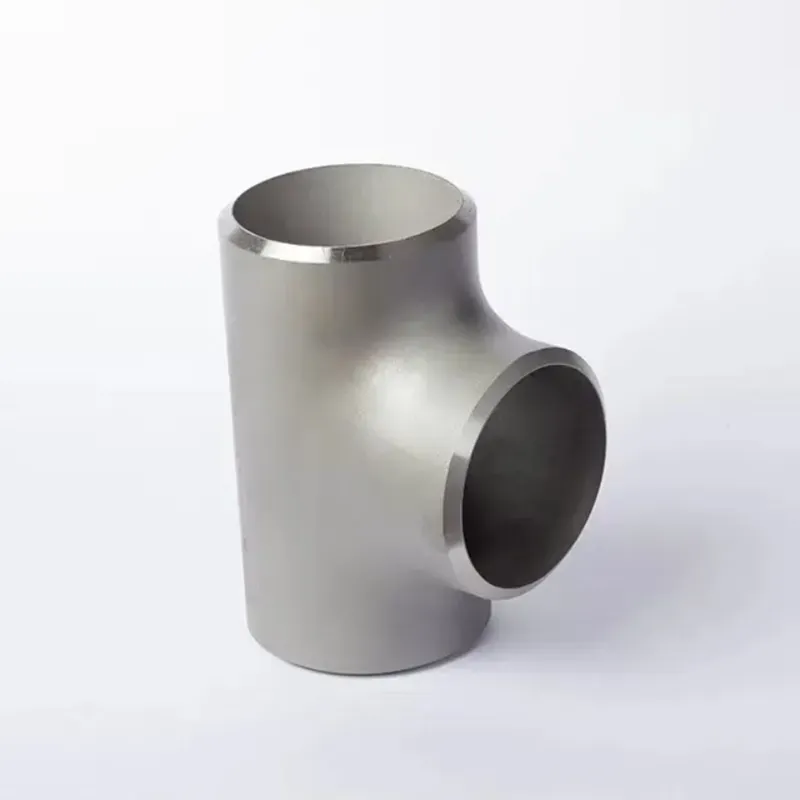-
Cangzhou Yulong Steel Co., Ltd.
-
Phone:
+86 13303177267 -
Email:
admin@ylsteelfittings.com
- English
- Arabic
- Italian
- Spanish
- Portuguese
- German
- kazakh
- Persian
- Greek
- French
- Russian
- Polish
- Thai
- Indonesian
- Vietnamese
- Zulu
- Korean
- Uzbek
- Hindi
- Serbian
- Malay
- Ukrainian
- Gujarati
- Haitian Creole
- hausa
- hawaiian
- Hebrew
- Miao
- Hungarian
- Icelandic
- igbo
- irish
- Japanese
- Javanese
- Kannada
- Khmer
- Rwandese
- Afrikaans
- Albanian
- Amharic
- Armenian
- Azerbaijani
- Basque
- Belarusian
- Bengali
- Bosnian
- Bulgarian
- Catalan
- Cebuano
- China
- China (Taiwan)
- Corsican
- Croatian
- Czech
- Danish
- Esperanto
- Estonian
- Finnish
- Frisian
- Galician
- Georgian
- Kurdish
- Kyrgyz
- Lao
- Latin
- Latvian
- Lithuanian
- Luxembourgish
- Macedonian
- Malgashi
- Malayalam
- Maltese
- Maori
- Marathi
- Mongolian
- Myanmar
- Nepali
- Norwegian
- Norwegian
- Occitan
- Pashto
- Dutch
- Punjabi
- Romanian
- Samoan
- Scottish Gaelic
- Sesotho
- Shona
- Sindhi
- Sinhala
- Slovak
- Slovenian
- Somali
- Sundanese
- Swahili
- Swedish
- Tagalog
- Tajik
- Tamil
- Tatar
- Telugu
- Turkish
- Turkmen
- Urdu
- Uighur
- Welsh
- Bantu
- Yiddish
- Yoruba

Jul . 27, 2024 08:34 Back to list
Benefits and Applications of Flanged Ductile Iron Pipes in Modern Infrastructure Solutions
Understanding Flanged Ductile Iron Pipe An Overview
Flanged ductile iron pipes have garnered significant attention in the construction and engineering sectors due to their unique blend of strength, durability, and versatility. These pipes play a crucial role in water distribution, sewage systems, and industrial applications, effectively transporting fluids and gases while ensuring leak-proof connections.
Composition and Properties
Ductile iron, or spheroidal graphite iron, is a robust type of iron characterized by its unique microstructure. The spherical graphite inclusions form during the casting process, which enhances the material’s ductility and tensile strength compared to conventional cast iron. This property allows ductile iron to withstand high pressure and stress, making it ideal for pipeline applications where longevity and reliability are critical.
Flanged ductile iron pipes are manufactured with flanges at each end, featuring standardized bolt holes that facilitate easy connection to other fittings, valves, or piping systems. The use of flanges simplifies installation and maintenance, allowing for quick disassembly without the need for welding or specialized tools. As a result, these pipes are not only regarded for their mechanical properties but also for their practicality in various engineering projects.
Applications
The applications of flanged ductile iron pipes are diverse. Primarily, they are utilized in the transportation of potable water and wastewater, ensuring safe and efficient flow. In municipal water systems, these pipes are favored for their ability to resist corrosion and withstand varying pressures, contributing to a reliable infrastructure. Additionally, the flexibility in design allows engineers to adapt flanged ductile iron pipes to complex layouts and varying environmental conditions.
flanged ductile iron pipe

In industrial settings, flanged ductile iron pipes are employed in chemical processing, power generation, and other applications where fluids of differing temperatures and chemical compositions are handled
. Their resistance to abrasion and impact makes them suitable for scenarios where pipelines are exposed to harsh conditions.Advantages
One of the standout advantages of flanged ductile iron pipes is their impressive capacity to handle high-pressure situations. With increasing demands for water supply, the strength-to-weight ratio of these pipes allows engineers to design systems that can efficiently manage significant loads. Furthermore, their smooth internal surfaces minimize friction loss, promoting effective fluid transport and reducing energy costs.
Another essential benefit is their longevity. Ductile iron pipes can last over 100 years with proper installation and maintenance, significantly reducing the need for replacements and lowering lifecycle costs. This aspect becomes increasingly important in an era where sustainability and resource conservation are prioritized.
Conclusion
Flanged ductile iron pipes represent a synthesis of strength, flexibility, and longevity, making them indispensable in modern engineering and construction. Their reliability in transporting critical resources like water and wastewater cannot be overstated, and their ease of installation enhances their desirability. As we continue to develop infrastructure to meet the challenges of urbanization and climate change, these pipes are likely to remain a standard choice in various applications across the globe. By integrating advancements in material science and engineering practices, flanged ductile iron pipes will undoubtedly play a pivotal role in shaping the future of pipeline systems.
Latest news
-
ANSI 150P SS304 SO FLANGE
NewsFeb.14,2025
-
ASTM A333GR6 STEEL PIPE
NewsJan.20,2025
-
ANSI B16.5 WELDING NECK FLANGE
NewsJan.15,2026
-
ANSI B16.5 SLIP-ON FLANGE
NewsApr.19,2024
-
SABS 1123 FLANGE
NewsJan.15,2025
-
DIN86044 PLATE FLANGE
NewsApr.19,2024
-
DIN2527 BLIND FLANGE
NewsApr.12,2024
-
JIS B2311 Butt-Welding Fittings LR/SR 45°/90° /180°Seamless/Weld
NewsApr.23,2024











